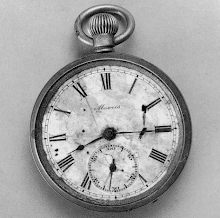American University is committed to keeping our community informed on the status of the remediation efforts being performed by the U.S. Army Corps of Engineers (USACE) within the boundaries of the Spring Valley Formerly Used Defense Site (SVFUDS) and, specifically, work that involves AU property ... The project history goes back to 1917 - 1918, when over 661 acres in northwest Washington, including the AU campus, were used by the U.S. government and the U.S. Army to support the war effort as a site to develop and test chemical agents, weapons, and munitions ... In the early 1990s, in an adjacent Spring Valley neighborhood, the discovery of materials left over from that research and testing resulted in the USACE returning to the area to conduct extensive environmental testing and cleanup operations ... Currently, there are two locations where USACE is conducting remediation efforts. One is an off-campus residential property and an adjacent lot owned by AU at 4825 and 4835 Glenbrook Road. The other location is on the south side of campus where the former Public Safety Building once stood ... The former Public Safety Building, which stood on the south side of campus near Fletcher Gate, was demolished in 2017 ... Previous USACE activities in this area confirmed the presence of some AUES related glassware and contaminated soil. With the building removed from the site, USACE will test the underlying soil, and then proceed to remove and replace it, if necessary.
Dan Nichols, Asst. VP
American University
September 27, 2019
Waiting to look under Public Safety Bldg foundation
Between 2002 and 2006, the U.S. Army Corps of Engineers excavated debris from around the former Public Safety Building. This area is referred to as the former Lot 18 disposal area. In 2006, the debris from Lot 18 was found extending toward the Public Safety Building ... With work plans in place, excavations around the PSB were conducted from June 2008 to June 2010. Contaminated soil and some suspected AUES-related glassware, several munition debris items, and one intact munition item were removed from around the building’s foundation ... The Army Corps’ current goal is to ensure that no suspected AUES debris continued under the PSB foundation ... Since AU had separate plans to remove the old building, the Army Corps is taking this opportunity to investigate the soil underneath the former building and remove any contamination encountered ... The team’s efforts to remove the cement foundation slab of the former Public Safety Building, investigate the soils underneath the foundation, and remove any potentially contaminated soils are tentatively scheduled to begin in the fall. The team began mobilizing this summer for set up and personnel trainings. The work is anticipated to take 2 - 4 months to complete.
US Army Corps of Engineers
PSB Fact Sheet
September 11, 2019















